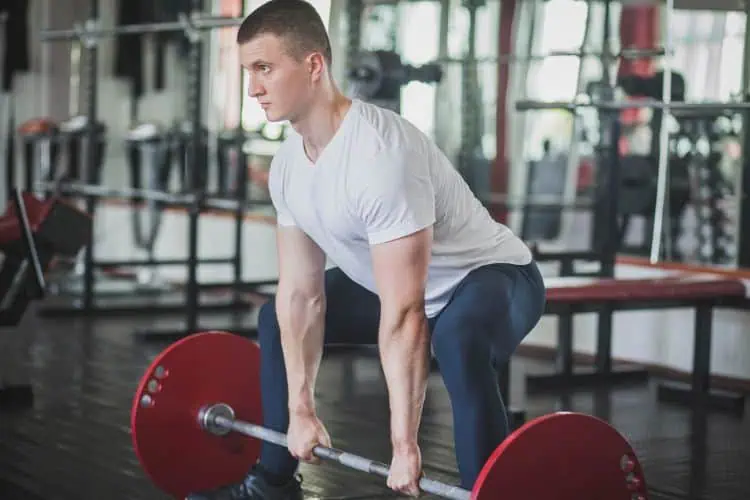
The Sumo Deadlift Program is a variation of the traditional deadlift that emphasizes power, strength, and flexibility. Named for its stance that resembles a sumo wrestler, this lift is a staple in strength training and powerlifting due to its effectiveness in targeting the glutes, hamstrings, and quads. For many lifters, it offers a more accessible alternative to the conventional deadlift due to its reduced range of motion and lesser stress on the lower back.
This guide will take you through a comprehensive Sumo Deadlift program, from understanding its mechanics and benefits to offering a full progression plan to improve strength and technique. By the end, you’ll have the tools you need to incorporate the Sumo Deadlift effectively into your routine.
Why Choose The Sumo Deadlift Program?
The Mechanics and Muscles Worked
The Sumo Deadlift requires a wider stance and an upright torso, putting more emphasis on the legs and reducing the load on the lower back. Here’s a breakdown of the primary muscles targeted:
- Glutes and Hamstrings: As the main movers, these muscles are heavily engaged during the lift.
- Quadriceps: The wide stance and knee bend activate the quads more than in a conventional deadlift.
- Back Muscles: The upper and lower back, especially the lats and traps, contribute to stabilization.
- Core: A strong core is essential for maintaining balance and posture throughout the movement.
Benefits of the Sumo Deadlift
The Sumo Deadlift offers a variety of benefits that make it appealing to both novice and advanced lifters:
- Reduced Lower Back Strain: The upright torso reduces the strain on the lower back, making it a great choice for those with back sensitivity.
- Improved Quad Activation: The knee angle in the sumo stance leads to greater quad engagement, offering balanced development for the lower body.
- Increased Stability: The wider stance provides a more stable base, which can help in lifting heavier weights.
- Diversity in Training: Incorporating both conventional and sumo deadlifts provides varied muscle activation, which can prevent plateaus and keep training fresh.
Setting Up for the Sumo Deadlift Program
Step 1: Positioning the Feet
The foundation of the Sumo Deadlift Program starts with foot positioning. Place your feet wider than shoulder-width, with your toes pointing outward at roughly a 45-degree angle. The wider stance and foot positioning help with a stable setup.
Step 2: Gripping the Bar
Bend at the hips and grab the bar with a double overhand or a mixed grip. Your hands should be shoulder-width apart, positioned directly below your shoulders.
Step 3: Engage the Core and Lift
Keeping your back straight and core tight, drive through your heels and extend through the hips and knees simultaneously. Maintain an upright torso and avoid rounding your lower back. Lock out the lift by squeezing the glutes at the top.
Building a Sumo Deadlift Program
Phase 1: Foundation (Weeks 1–4)
Goal: Develop a strong base with proper form and moderate weight.
- Frequency: 1–2 sessions per week
- Reps and Sets: 3 sets of 8–10 reps
- Weight: Start with a manageable weight to focus on form. Around 60–70% of your max deadlift weight is recommended.
Supplementary Exercises:
- Goblet Squats: 3 sets of 12 reps
- Romanian Deadlifts: 3 sets of 10 reps
- Plank Holds: 3 sets of 45 seconds
Phase 2: Strength Building (Weeks 5–8)
Goal: Begin to increase the weight and lower the reps to build strength.
- Frequency: 2 sessions per week
- Reps and Sets: 4 sets of 6 reps
- Weight: Increase to 75–80% of your max deadlift weight.
Supplementary Exercises:
- Front Squats: 3 sets of 8 reps
- Weighted Lunges: 3 sets of 10 reps per leg
- Hyperextensions: 3 sets of 12 reps
Phase 3: Peak Power (Weeks 9–12)
Goal: Focus on maximizing strength with heavy weights and low reps.
- Frequency: 2 sessions per week
- Reps and Sets: 5 sets of 3 reps
- Weight: Aim for 85–90% of your max deadlift weight.
Supplementary Exercises:
- Box Squats: 3 sets of 5 reps
- Deficit Deadlifts: 3 sets of 6 reps
- Core Rotations: 3 sets of 12 reps
Phase 4: Testing Max Strength (Week 13)
In this final week, it’s time to test your one-rep max. Start with a warm-up of lighter sets, then work up to your max attempt. Ensure you’re well-rested and mentally prepared for this week.
Tips for Success Sumo Deadlift Program
1. Focus on Mobility and Flexibility
With the wide stance of the Sumo Deadlift, hip and groin flexibility are crucial. Incorporate mobility exercises like hip openers and dynamic stretches into your warm-up.
2. Incorporate Accessory Movements
Accessory exercises like Romanian deadlifts, lunges, and squats will strengthen the muscles involved in the Sumo Deadlift and help prevent injuries.
3. Use Proper Progression
Avoid the temptation to add too much weight too quickly. Gradual progression allows your muscles and connective tissues to adapt, leading to more sustainable gains.
4. Rest and Recovery
Deadlifting is taxing, and recovery is essential for muscle growth and strength. Make sure to schedule rest days and prioritize sleep and nutrition to fuel your progress.
Common Mistakes to Avoid With Sumo Deadlift Program
- Not Engaging the Core: A tight core helps prevent lower back strain. Always brace your core before lifting.
- Allowing the Knees to Collapse: Knees should track over the toes, not fall inward. This keeps the movement stable and reduces injury risk.
- Rounding the Back: A neutral spine is essential. If your back rounds, reduce the weight and work on technique.
- Lifting with the Back Instead of the Legs: The Sumo Deadlift relies on leg power. Focus on pushing through your heels and engaging the legs throughout.
The Sumo Deadlift is a powerful lift that can enhance strength, stability, and muscle development when performed correctly. Following a structured program like the one outlined here can help you safely and effectively incorporate this lift into your routine.

